
Issue #: 146
Published: March / April 2016
- Price per issue - digital : 5.40€Digital magazine
- Access to Multihulls World digital archives Digital archives
Sailing around the world with his family, Captain Olivier and his family are on the lookout for any traces of the legitimate party of HMS Bounty’s crew. And it’s on an atoll lost in the Pacific that our two famous captains - Bligh and Mesnier - find themselves… 200 years apart.
Tofua is an inhospitable island, a volcanic cone plunging straight into the sea. Don’t rush to go there! The island has no sheltered anchorages. But by carefully studying the chart, I notice that there is a little rocky step with twenty-odd meters of water over it to the north of the island. If it really exists, we must be able to anchor there, rather than have the hook drop into the great abyss of the Pacific Ocean…. Of course it’ll be yet another precarious anchorage! But it will be worth it.
Jangada in the Pacific, following in the wake of the famous Captain Bligh
Flashback: At Jangada’s chart table, a few hours after our little sojourn on the coral at Limu Island, I analyzed the weather reports we had received from the US, New Caledonia and New Zealand. We needed to get our boat patched up pretty quickly. We decided to skip visiting Fiji. It looked like a favorable weather window might open up in the next few days to allow us to reach New Zealand. Leaving from Tonga, with an area of high pressure which had decided to move away from the Tasmanian and Australian coasts and move eastwards into the South Pacific. Our goal was to leave as early as possible, as soon as the wind started to shift, so as to arrive at Whangarei before the deep and formidable depression which would surely follow the high could catch us in mid-passage! 1,125 miles separated us from Aetearoa, the land of the long white cloud.
On board, preparations were hurrying along. We left Pangai Bay for a little anchorage to the south of Tofanga Island, some twelve miles to the west. Tomorrow we would make the north coast of Tofua, around thirty miles west of the Ha’apai Group. We’d be there waiting in ambush to take on the shifting winds, which would herald our departure toward the land of the kiwis. Bearing in mind that this is going to be one of the trickiest passages of our whole trip…
From above, the island clearly lacks an anchorage
For the time being, it looked to me like perfect conditions for my little expedition in the footsteps of Captain Bligh. Other cruisers who’d lately been asking us about our plans didn’t seem to share my enthusiasm for a somewhat off-putting detour via Tofua. Undoubtedly because they don’t share my passion for maritime history. They are completely ignoring the fact that at the end of the 18th century, Tofua witnessed a most important episode in the legendary mutiny of HMS Bounty. An episode which was followed by a little-known, but very real, maritime exploit, which should make any sailor who is slightly better informed than the average cinema-goer, think about the seafaring abilities of Ship’s Lieutenant William Bligh, a Royal Navy officer with a bad reputation, forcibly put into a small boat, close to the volcanic island of… Tofua. We should fight for historical accuracy, often much more complex than the Hollywood version of events! After their 5 month stopover in Tahiti, the majority of the sailors on the Bounty had succumbed to the sensual charms of the vahines. The famous mutiny against Bligh’s harsh ways took place in Tonga, thirty-odd miles from Tofua. But perhaps I should might as well explain the true story of The Mutiny On the Bounty straight away: what were its origins, the reasons for it, the way it happened and the breakdown of the numbers. Who remained on board on the one hand, and who embarked in the ship’s boat? Then there’s the epic saga of the voyage, initially to the Austral Islands, to Tahiti and then to Pitcairn on the one hand, on Bligh’s boat, and on the other, toward Timor and then Batavia and finally to a court martial in England, which is infinitely more complex, and so more exciting than you would first believe. All the same, the temperament and the real personality of the two principal players in this story, William Bligh and Fletcher Christian, are not as straightforward as the Hollywood versions designed to seduce the viewing public would have us believe. In short, Fletcher Christian was not as handsome, good, and fair as he is made out to be (later to be assassinated by the Tahitians who had come to live with him on Pitcairn) and William Bligh was not as ugly, wicked or unjust as you think: not only was he acquitted by the British Admiralty court martial, but he was promoted to Ship’s Captain, and set off again for Tahiti on the same mission two years later. A mission which would succeed with two ships; and he would be commended by Admiral Nelson at the Battle of Copenhagen in 1801; before being named as Governor of New South Wales (Australia’s largest state). He then went on to become Vice-Admiral… For years I have been studying this story, reading everything which has ever been written on the subject and gathering information before forming my own idea of what really happened, enlightened by my own experience of foreign-going warships. The story is not as straightforward as it might seem.
The kids were having fun on board as we approached this history- laden cove.
“We set out from O-Tahiti on April the 4th 1789, having on board 1,015 breadfruit plants and several other precious fruit trees from these lands, which we had been gathering carefully for 5 months and ten days, and which were, at the time of our departure, in the best condition…
By the evening of the 28th, due to light winds, we had only made as far as to be off the Friendly Islands (Tonga), and I set a course toward the isle of Tofua…
Shortly before sunrise, Mr Christian and the master of arms, the second gunner and a man named Thomas Burkitt, entered my cabin whilst I was still asleep: they seized me, tied my hands behind my back, threatening to kill me should I speak or make the slightest sound…”
24 days after setting out from Tahiti: Bligh and 18 of his men were forcibly put into the Bounty’s boat, which, overloaded, could carry no more.
“Without further ceremony, being held by the cord which tied my hands, I was forcibly thrown on board. As soon as I was in the boat, we were led to the aft of the vessel by means of a rope. After subjecting me to a thousand jokes and kept me thus for some time as their plaything, these undignified rebels finally set us adrift on the great Ocean…”
“Mindful of needing to reflect on the situation, my first resolution was to search for water and breadfruits on Tofua… but the coasts were steep-to and so filled with rocks that I was obliged to abandon this endeavor, and to hold station to leeward of the island all night by means of two oars, there being no anchorage. In the morning, at daybreak, we followed the coast searching for a landing place, and it was only a ten o’clock that we discovered a rocky cove on the northwest of the island: I threw out the grapnel at twenty fathoms distance from the rocks. At the back of the cove there was a cave about seventy yards from the water’s edge.”
Jangada’s encounter with a humpback whale and her calf…
Bligh and his men stayed 5 days in the cove at Tofua, laboriously trying to gather water and supplies. Progressively, relations with the natives, who were becoming ever more numerous, degenerated to a dramatic climax.
“The Indians began to gather in a crowd, and it seemed to me there was hostility towards us. From all around we heard the noise of stones they held in each hand being banged together. I knew this to be a signal to attack. The sun was near setting when I gave the word to depart. We embarked everyone aboard with the exception of one sailor, who jumped ashore to let go the sternline, despite the cries from the master and the men of the crew to return aboard. I was just aboard when two hundred men commenced the attack: the unfortunate who was ashore was overcome and then stones began to fall like hail. In this moment I saw five Indians around the unfortunate sailor they had killed, and two of them were battering his head with rocks they held in their hands. I saw them loading their canoes with rocks, and twelve men approached to begin combat with us, and they threw them with such vigor that they were on the point of disabling us. Seeing this, I assumed what would happen throwing their rocks in the sea: they would lose time picking them up, night would fall, they would abandon their pursuit, return ashore and leave us to reflect on our sad situation. The man I had just lost was named John Norton.
We were now sailing along the west side of the island of Tofoa, and my mind was employed in considering what was best to be done, when I was solicited by all hands to take them towards home: and, when I told them no hopes of relief for us remained until we came to Timor, a distance of full 1,200 leagues, where there was a Dutch settlement. We bore away across a sea, where the navigation is but little known, in a small boat, twenty-one feet nine inches long from stem to stern, deep laden with eighteen men; without a chart, and nothing but my own recollection and general knowledge of the situation of places, to guide us. I was happy, however, to see every one better satisfied with our situation in this particular than myself.”
Swimming lessons from mom!
48 days later, Bligh and his 17 companions, no doubt in a pitiful state, thin and starving, but alive, arrived at their destination, having overcome many dangers. A remarkable feat, all the same, for Mr Bligh to have achieved such a voyage. It is only fair to explain to you this point again: regardless of what anyone says, at 35 years of age, there was talent and courage required to sail from Tofua to Timor, a journey of some 3,618 nautical miles. Without a chart. And in an open boat 21 feet 9 inches long. That’s 6.63 meters. And with a beam of 1.93 meters. With 18 men aboard, the freeboard was only 20cm… Only the unfortunate Norton, killed by the islanders at Tofua, was absent from the roll-call on their arrival at Timor.
Whatever Bligh’s strengths and weaknesses as a captain, he was without doubt a good seafarer. In my own opinion, the ordeal of the mutiny to which he was subjected and the voyage to Timor, must have made him reflect at length, though perhaps a little too late, on the tricky art of commanding men…
As for Fletcher Christian, I’m not sure he had all the qualities of a captain, particularly in regard to what was to happen later on at Pitcairn. During this period he never imposed his authority on the mutineers, nor did anything to organize harmonious cohabitation between the Tahitians and the rebellious English sailors. What an exciting story!
Marin, 13, watching the dance of the whales.
And here we are, on board our catamaran, unassuming and unknown sailors, more than two centuries later. Just ten leagues from Tofua in the middle of the Pacific! We’re not going to dither. We have nothing to lose! Here we go: set a course for Tofua! We’ve got to find the cave of the sailors from the Bounty!
We left the Ha’apai Group making a northwesterly course toward the massive volcanic cone ahead of us. By early afternoon we were making our way along the north coast of Tofua keeping a short distance away. With one eye on the sounder, I became aware that the depth diminishing, confirming the existence of the submerged rocky outcrop upon which I was hoping to anchor. I didn’t really have any alternative plan. A few minutes later, the rocky outcrop was below our hulls and after a few passes with the sounder, I picked a good anchoring spot in 18 to 20 meters of water. Not really sheltered, but welcoming. I marked the position on the plotter and carried on our track. I had an aerial photo showing the existence of the small bay on the northwest coast of Tofua. We continued close-in along the coast. I re-read Bligh’s description, noting every technical detail. The little cove opened up slowly in front of us. The surf was breaking violently. We immediately noticed the black outline of the cave at the foot of the vertical rock-face. My pulse started to race, I was as determined as ever. Access in to the bay was just as Bligh described it: not easy. Even with a southeasterly wind. It would be unimaginable if the wind were from the west… The bay of the Bounty’s loyal sailors appeared before our eyes. I couldn’t help but make a few turns off the little bay. I watched. And I considered.
It was in this little inhospitable cove, 221 years ago that the 18 men who had been forced into the Bounty’s little boat with their Captain, had spent 5 days, before undertaking an incredible maritime voyage in the western Pacific. And John Norton, the stocky, 36 year-old quartermaster, not wanting to cut the ropes, lost his life here on the rocks, beaten to death by the stones of the Tongan islanders.
I noted on the way, from looking at our GPS display, that Captain Bligh was only out by one minute of latitude (less than 2km) in calculating the position of the cove at Tofua. This was highly accurate, and was probably due to the fact that he spent several days here and would have been able to shoot several noonsights of the sun in what is called a meridian passage. These sights, the only ones of the day which are independent of the need for knowing the precise time (the observer waits for the solar disc to reach its zenith, measuring the maximum corresponding angle with the horizon, before effecting spherical trigonometry calculations to determine his latitude), would have allowed Bligh to calibrate his few navigational instruments, ahead of his incredible crossing to Timor. These included the master gunner Peckover’s watch, which they used until it stopped just short of a month later…
On Tofua’s northwest coast, Norton Cove and Captain Bligh’s cave…
We dropped the anchor in the spot we had previously noted, and Marin and I set off in the dinghy to visit the Bounty’s cove. We became aware of a whale breathing out through its blowhole close by, and decided to approach, to find an adult humpback and her calf. We followed them, and they didn’t seem to be concerned by our discreet presence. We returned to the boat to pick up Barbara and Adélie, whom we had called on the VHF and had been following the whales with the binoculars for a few minutes. We loaded masks, snorkels and fins, and soon found these gentle giants who cruise the calm waters downwind from Tofua. The mother must have been getting on for 20 meters in length, or at least 17 or 18, and the calf 5 or 6 meters. More used to eating krill in the cold waters of the Antarctic, humpbacks come up to the tropics to give birth and spend the first weeks of their lives here, before setting off again on the big journey down to the southern. In order to survive, the calves have to learn how to grow up quickly. Right in front of us, the young animal surfaced several times which is typical of this species. He was never more than a few meters from his mother, and their graceful ballet was simply magical. We came close, cut the motor, and could see in the translucent water, the enormous body of the mother, almost vertical, pushing the calf’s nose toward the surface. An incredible sight happening right before our eyes in this perfectly clear water. We started with slow movements so as to not disturb the creatures, who didn’t appear to be at all concerned by our presence. It seemed to me that the mother, who had been watching our boat for a while, understood that our behavior was not in the least bit threatening. Sometimes we found ourselves right above them and we had to distance ourselves a little. Marin was desperate to jump in the water, but was apprehensive. I had to stay in the dinghy to maneuver it. So I encouraged him, explaining that despite their size, they are not naturally dangerous, and are highly developed animals. When I told him that this was likely one of maybe only a couple of occasions in his life where he would have the opportunity to swim with a whale almost 20 meters long, his mind was made up, and he dove right in. He stayed several minutes in the water close to the animals, and we detected no signs of them being at all concerned at our presence. I jumped in the water for a brief moment, and in those few seconds close to these giants, I felt a great sense of humility. The whale’s enormous eye sparkled with intelligence, observing me at just a few meters distance. Incredible. Adélie dove in too, but was afraid and soon climbed out again. Barbara was fascinated, and put on her mask and fins and came to check out this amazing sight close up.
An hour after our encounter, night fell on the volcanic island of Tofua. The silhouette of our sailboat, alone in this deserted anchorage, seemed detached from the horizon. It was too late to go ashore that evening at Norton Cove (I have since named it that).
In the early evening the wind shifted a few hours ahead of the forecast to the east-southeast. This was the opening of our weather window which had been suggested to us by New Zealand meteorology guru Bob McDavitt. We had contacted him by email, for advice on safely making this passage from a weather perspective. The sun rose over our precarious anchorage. I quickly downed my coffee, and Marin and I set off for Norton Cove.
We surveyed the area before choosing our landing spot, observing the surf rolling into the bay, then I jumped onto the rocks. In this isolated place you’ve got to be prudent, and Marin stayed in the dinghy, keeping a short distance back from the surf. It was safer that way. I found a path through the black rocks where the Bounty’s boat must have been tied up by the stern, with the grapnel out forward. The same rocks, where I easily imagined Quartermaster Norton’s violent end. And, fifty-odd meters further on, I found the cave where Captain Bligh’s crew had stayed. The sea had deposited a fair amount of driftwood and a bunch of stones wedged in the cliff-face by westerly storms. I spent a few moving moments there, imagining the scenes which had been played out.
That night at the anchorage on the north coast of Tofua, I must have got up 5 or 6 times. The south-easterly wind we were waiting for had begun to blow down the slopes of the volcano. The pull on the anchor chain had switched through 180°, and all night long the chain had been rattling on the bottom. This noise transmitted up over the bow-roller and into the skipper’s ears. It was letting us know the wind was ready. It was time to go. We hoisted sail west of Tofua. En route for Aotearoa, and the green lands of New Zealand. The whales were nowhere to be seen this morning. The wind picked up a notch, and we needed the second reef and two rolls in the solent. A full-on departure, with 25 knots of apparent wind. Ideal for washing the decks! We set a course of 207°, a straight line to Whangarei…
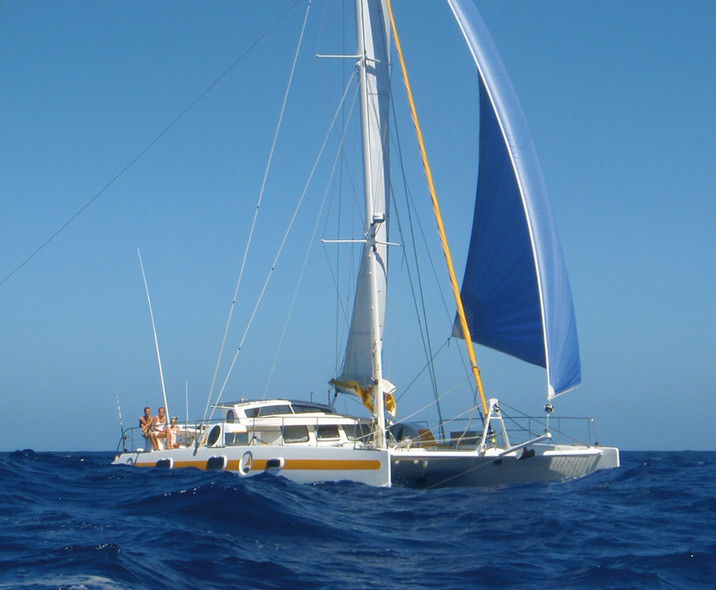
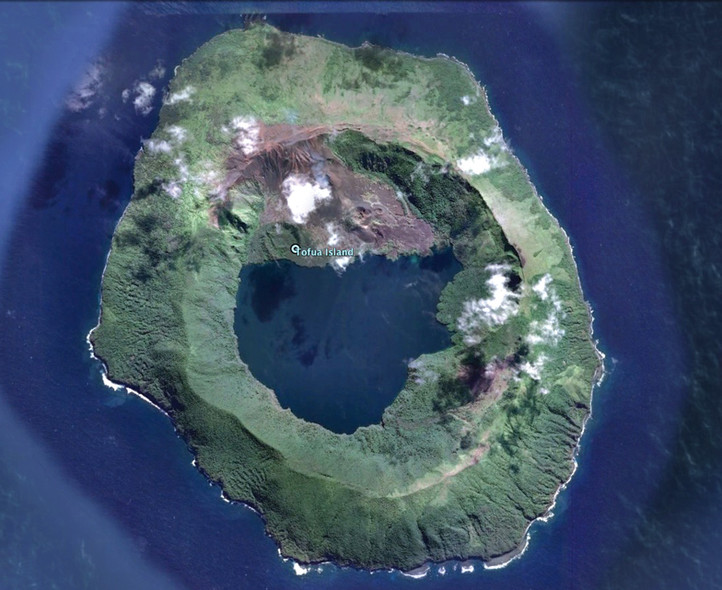
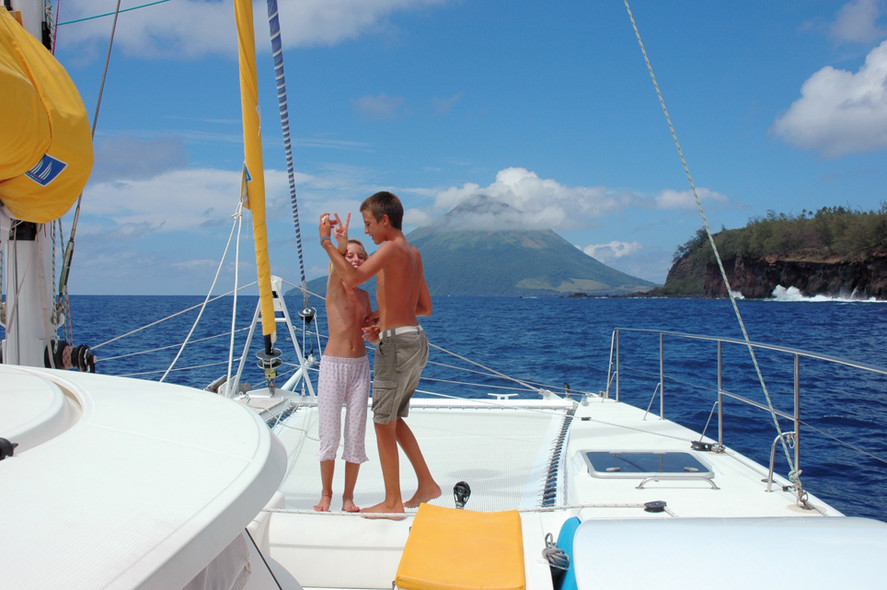
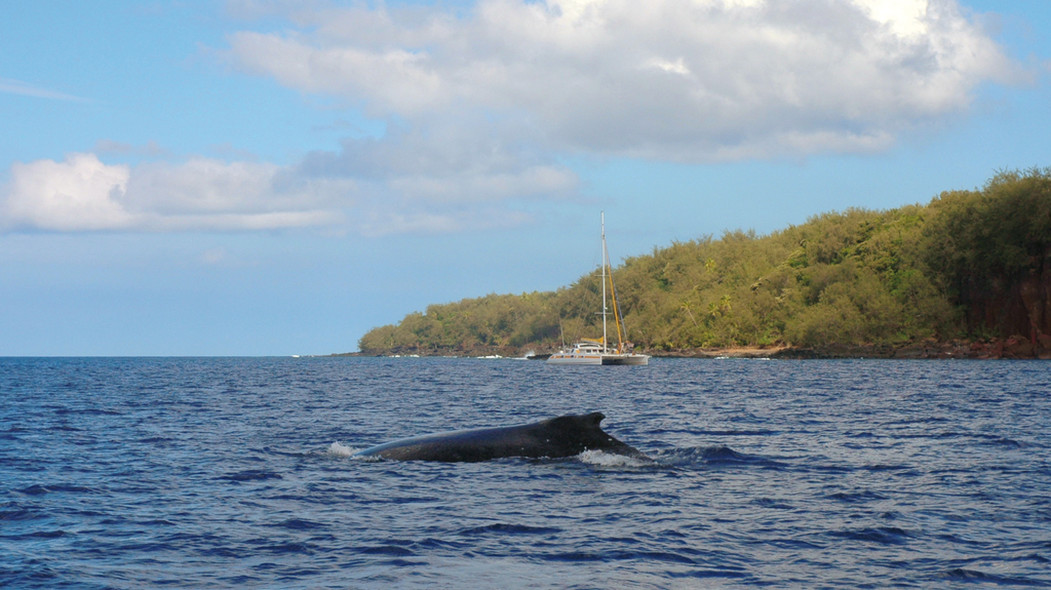
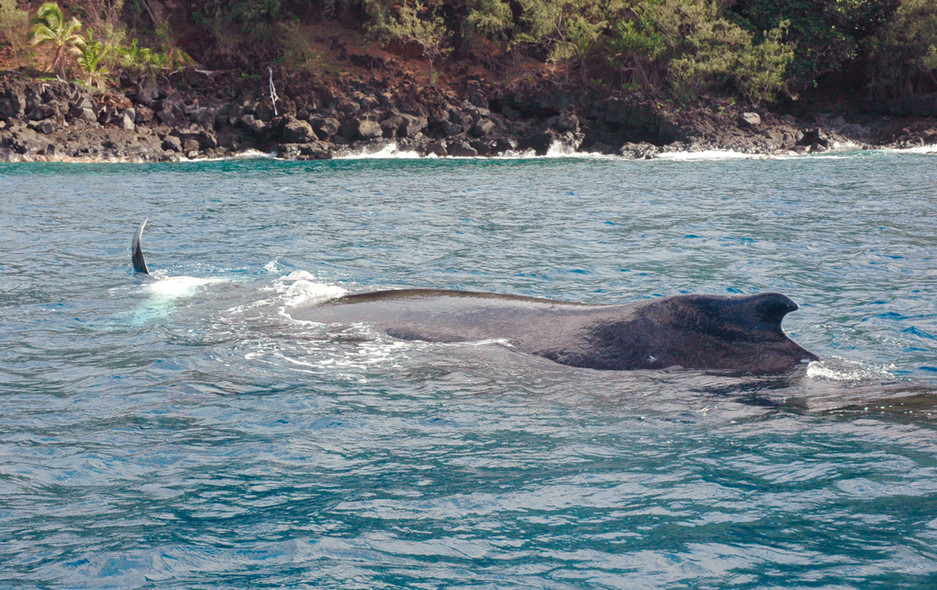
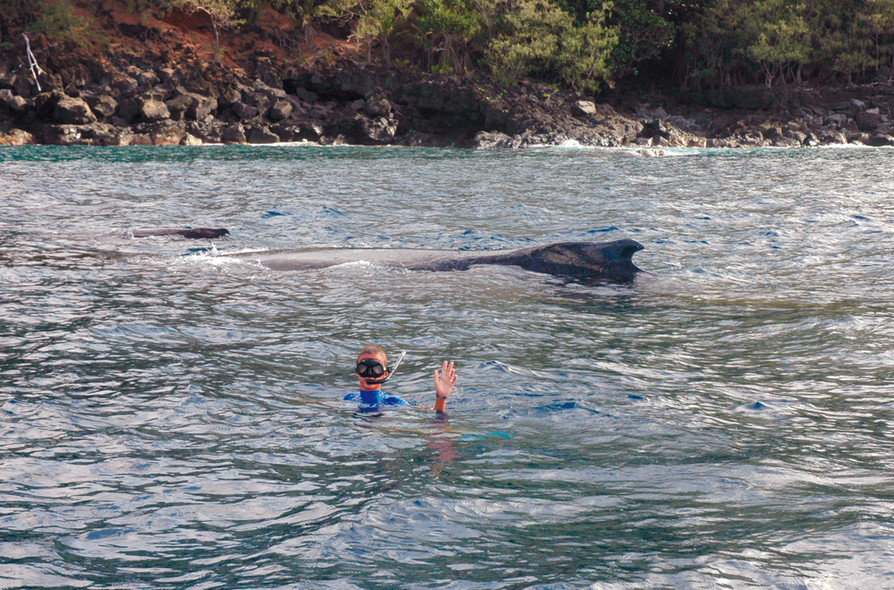
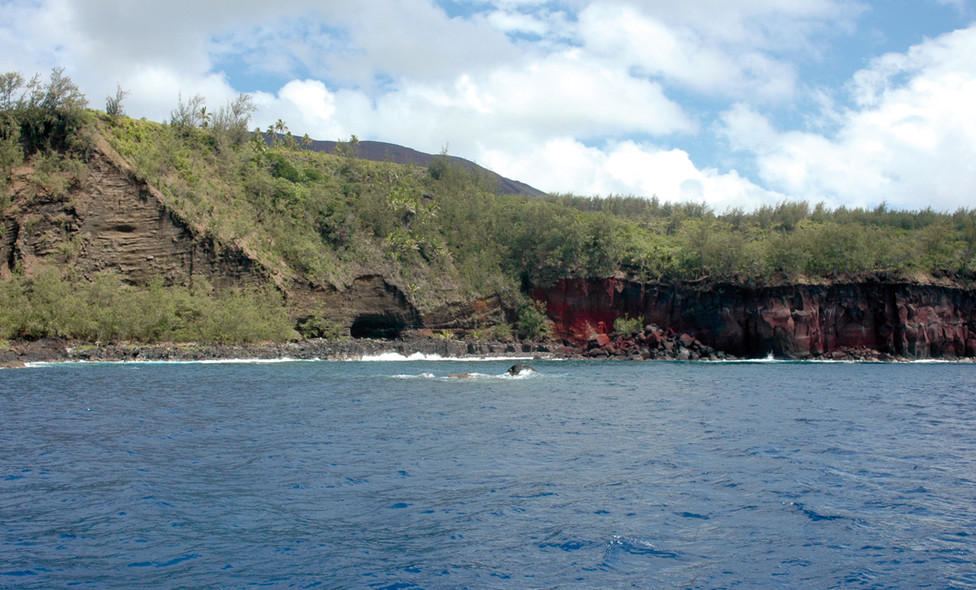
What readers think
Post a comment
No comments to show.